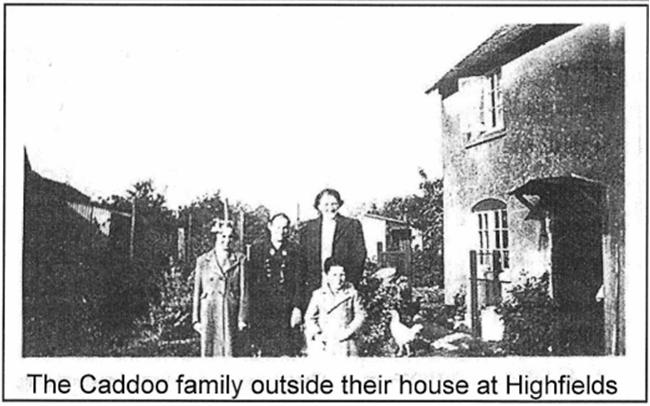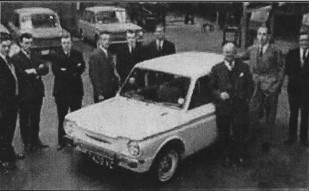Once the Second World War was over there was a period of transition, nationally and locally.
The National Health Service was introduced, and the advent of National Insurance brought pensions, unemployment benefit and sickness benefit, all of which would benefit rural areas. Rationing was in place until the early 1950s.
It was at this time that perhaps the most recent formal expansion of Church Lawford village took place, with the new houses being built in Middle Lane straight after the war, and in Newnham Lane in the 1950s (the group of Airey Houses). The cottages in Kings Newnham were gradually being replaced or upgraded, as were many in Church Lawford village. New development took place in Church Lane and the streets were then given formal names for the first time. Many existing residents would move from the old cottages into long-term homes.

Liz Parvin in her 2014 village history review also notes that the Cadoo family were living in the remote Highfields Farm Cottage (over the hill in Kings Newham as it descends towards Hungerfield and Cathiron). She remarks that their cottage was without running water or electricity for even longer than the main villages – as would be the case for other farm cottages.
Many “new” villagers came here to stay, alongside many others who could trace their families to pre-war days – including a family such as the Deveralls in Kings Newnham who had been “bombed out” of their house in Coventry during the war, had taken refuge in Kings Newnham, and ended up staying for many years afterwards.
A look at the contrasts in the Village Directory from 1950 and 1951 through to 1959 and 1960 highlights the various changes and the new housing.
During the 1950s the Street Names and house numbering in Church Lawford used today were introduced. This initiative caused some debate in the village, as detailed here. Kings Newnham continued to use its tried and tested approach to that subject – with some recollections from that period here.
Facilities in the village were gradually improving, as were the housing conditions throughout those twenty or so post-war years – but it would take some time for all of the services to reach the more remote farms and their associated cottages.
A more comprehensive review of the various village services in the various locations will be carried out once additional villager reflections are available regarding:
- Water Supply
- Electricity Supply
- Sewage Facilities
- Refuse Collection Services
- Household Fuel (Coal / Paraffin etc) – with discussion on heating homes (Gas supply was a while later)
- Communication (Telephone / Postal Service / Public Transport)
Liz Parvin also notes that in the years after the war there was another notable resident of King’s Newnham. Peter Ware, who completed the building of Mill Park House in 1958, had at that time just joined the Rootes car company as an engineer. Prior to that he had been in the navy until invalided out with TB, and had farmed in Somerset. He was the chief engineer on the development of the Hillman Imp and the photo below shows him with the team of engineers who designed it. The imp was launched, with much acclaim, in 1963 although it is fair to say that it was never the success of its contemporary the mini. More details are at https://www.imps4ever.info/marques/personnel/peter-ware-rootes-chief-engineer.html
Here at home, Peter Ware was responsible for building a miniature railway which ran round the garden and we understand that village fetes were often held here with the railway as a big attraction!

Keith Sinfield looked at this period in Church Lawford as part of the 2014 series in the Village Newsletter. In the immediate post-war years, life returned to its pre-war normality, albeit with the stringencies of rationing. The village, though, was fairly self-contained, having: a shop, post-office, school, pub, wheelwrights, a cobblers and a smithy. Sporting and recreational groups abounded: cricket and football teams, Scout troop, Cub pack, Brownies & Guides. Many residents remember attending the Old school, where children’s ages ranged from 3 to 14. They have memories of the annual May Day celebrations, presided over by a May Queen, with children dancing around a Maypole. Most of the afore-mentioned facilities have since disappeared, and the old school, not matching up to the standards of the new education acts, was closed and replaced by a new school in 1964, built on land nearer the centre of the village.
Discussions had begun about the plans for the RAF Church Lawford site shortly after the war, and they continued for many years – see this link for details of that debate and the use of the site in the interim period. The actual RAF housing was in the Long Lawford parish.
